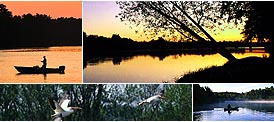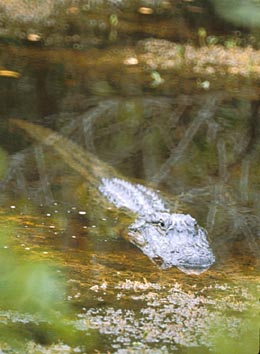


Hypothermia
By Greg Rouse
Hypothermia is considered the number one killer in the outdoors. It can occur in both warm (summer) and cold (winter) climates and is usually the combination of two factors, cold and wet. If you are in a warm tropical place and you add rain and wind, hypothermia can rear its ugly head.
It only requires an exposure time of several hours, but it can take up to a day. The myth that you will die in your sleep if you try to rest, is just that, a myth. If you are asleep, you will wake up to uncontrollable shivering and then progress into a state of disorientation if nothing is done. So if you want to try and huddle under a blanket and rest, by all means do it. But on the other hand, if you canít stop shivering, you need to take action.
So what is it? Hypothermia is the lowering of the body's core temperature. The victim is usually dehydrated, exhausted, calorie depleted, wet and cold. As a result they often get what is known as the "umbles", they fumble, stumble and mumble.
Symptoms of Hypothermia
1. Uncontrollable fits of shivering.
2. Vague, slurred speech.
3. Memory lapses and incoherence.
4. Frequent stumbling.
5. Drowsiness.
Treatment of Hypothermia
1. Get the victim out of the wind and rain. Create a shelter.
2. Strip off all wet clothing.
3. Give warm drinks. Warm fluid will act as a blood volume expander.
4. Get the victim into dry clothes and a warm sleeping bag.
5. Feed the victim. Calories are a unit of heat, so stoke the furnace.
6. Allow the victim to rest until they have recovered.
Treatment of Severe Hypothermia (slow re-warming is highly recommended)
1. Get the victim out of the wind and rain.
2. Strip off all wet clothing.
3. Place the victim in a sleeping bag with another person for maximum warmth. Use hot water bottles inside a sock or heat packs, placed around the neck, arm pits, groin and in applied to the palms and soles of feet for best heat exchange.
4. Give warm drinks when the victim is alert.
5. Give food when possible.
6. Allow the victim to rest until they have recovered.
Note: If you are unable to climb into the sleeping bag with the victim for evacuation or other reasons, you may want to use a Hypothermia Wrap ---
Hypothermia Wrap
1. Lay a tarp or rain fly down on the ground.
2. Lay an insulating pad and/or two in the center.
3. Lay a dry sleeping bag on the pad.
4. After removal of wet clothing, place the victim in the sleeping bag.
5. Place hot water bottles or heat packs around the neck, arm pits, groin and applied to the palms and soles of feet.
6. Close the sleeping bag and place another sleeping bag or blanket on top.
7. Wrap the victim up in the tarp like a burrito and keep monitoring them.
* A key point to remember is that if you wrap a frozen salmon up in a sleeping bag, it will stay frozen. So, you must have external heat sources in the bag and they need to be check to make sure they remain warm.
* Also, be alert For "Afterdrop". Afterdrop is where the victim's core temperature goes down during the re-warming process. The cooled blood stranded in the extremities (vasoconstriction) will begin to return to the heart and to the regular blood volume.
Prevention of Hypothermia
In the Northwest, hypothermia occurs most often in cold, wet and windy weather. In the outdoor environment, hypothermia can occur rapidly if the backcountry traveler fails to dress for the conditions. Use hats, neck gaiters, and insulating layers to keep warm.
1. Stay dry. Wear raingear in wet conditions and wind gear as needed.
2. Be aware of the wind chill factor.
3. Eat and drink frequently.
4. Pace yourself and avoid fatigue.
5. Wear proper layers of clothing, made of synthetic fibers or wool.
As a final note, always handle a severe hypothermia victim with great care to avoid cardiac arrest. An irregular and ineffective heartbeat can occur from rough handling of the severely hypothermic victim.
Also, if you are unable to detect a pulse in a severely hypothermic victim, because of their fragile state, it is recommended that you first perform rescue breathing for a couple of minutes before you attempt CPR compressions (compressions are not very gentle). If there is a mild and undetectable heart beat, the warm oxygen will often increase the rate and strength of the heart beat so that you are able to detect it.
About the Author:
Greg Rouse has been teaching wilderness sports and emergency response at the university and college level for over a decade. He is also the founder of a unique web site called WildernessTrip.com, a one-stop resource for self-guided wilderness trip planning. This web site is basically; a free online guidebook that photo-documents trips with interactive maps and detailed route descriptions. Each trip has free pictures and free topographic maps of the trail, all in a print-friendly format. Check it out at www.WildernessTrip.com
Article Source: http://EzineArticles.com/












